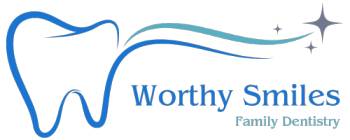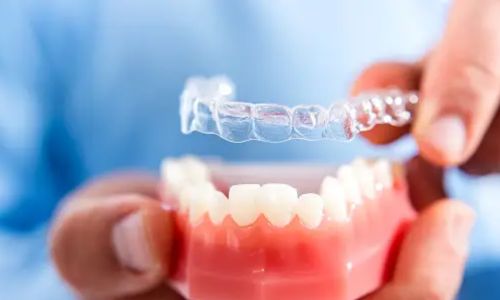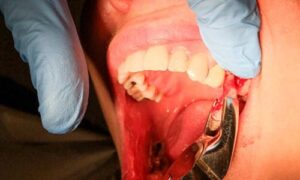Introduction:
Choosing between Invisalign vs Braces is a significant decision on your orthodontic journey. Both options aim to straighten teeth and correct bite issues but differ in aesthetics, comfort, and maintenance. In this article, we’ll delve into the detailed comparison between Invisalign vs Braces, outlining their unique features.
Comparison of Invisalign vs Braces
Appearance:
- Invisalign revolutionizes the orthodontic experience by offering clear, virtually invisible aligners. This innovative approach provides a discreet solution for individuals seeking a less noticeable option for teeth straightening. Unlike traditional braces with metal or ceramic brackets, Invisalign aligners allow individuals to undergo orthodontic treatment with confidence without drawing attention to the fact that they are experiencing dental correction.
- Traditional braces, whether made of metal or ceramic, are characterized by the visibility of brackets and wires. The use of metal or ceramic brackets contrasts with the discreet nature of clear aligners. The visibility of traditional braces may be a consideration for those who prioritize a less conspicuous orthodontic solution. However, the option for customization through colored bands adds a personalized touch, allowing individuals to express their style and preferences during their orthodontic journey.
Comfort:
- One of the key advantages of Invisalign is its emphasis on comfort throughout the treatment process. The aligners are custom-made with smooth edges, ensuring a comfortable fit in the mouth. Their removable nature adds to the comfort factor, allowing individuals to take them out for eating, brushing, and on special occasions. This level of flexibility contributes to a more pleasant orthodontic experience compared to the fixed nature of traditional braces.
- The initial phase of wearing traditional braces may involve discomfort during adjustment. Individuals may experience soreness after orthodontic adjustments. Unlike Invisalign, traditional braces are non-removable throughout the treatment duration. While this fixed nature ensures continuous teeth straightening progress, it may require an adaptation period for individuals to become accustomed to braces in their mouths.
Treatment Duration:
- The duration of Invisalign treatment varies based on individual cases but is generally comparable to traditional braces. Invisalign’s effectiveness in addressing specific orthodontic issues means it can achieve results within a timeframe that aligns with traditional orthodontic methods. The flexibility of the treatment plan allows for customization, ensuring that each patient receives the appropriate duration of treatment tailored to their unique needs.
- Traditional braces are known for providing consistent progress in correcting orthodontic issues. The treatment duration is often predictable and may, in certain cases, be shorter than Invisalign. Consistent progress is achieved through the regular adjustments made by the orthodontist during in-person visits, ensuring that the teeth are effectively guided into their desired positions over time.
Maintenance:
- Maintaining oral hygiene during orthodontic treatment is crucial, and Invisalign simplifies this aspect. The aligners can be easily removed for cleaning, allowing individuals to keep their regular oral care routine without the challenges posed by fixed brackets and wires. Additionally, the absence of dietary restrictions is a notable advantage, as individuals can enjoy their meals without concern for damaging orthodontic appliances.
- Maintaining oral hygiene with traditional braces can present some challenges. Cleaning around the brackets and wires may require extra effort and specialized tools such as floss threaders or interdental brushes may be recommended. Additionally, individuals with traditional braces are often advised to be cautious about their diet, as certain foods, especially sticky and hard ones, can potentially damage the braces. This necessitates adherence to specific food restrictions to prevent complications during treatment.
Adjustments:
- Invisalign introduces a virtual treatment plan utilizing computer-generated 3D models to guide teeth straightening. This advanced technology minimizes the need for frequent in-person adjustments typically associated with traditional braces. The virtual treatment plan enhances precision, allowing for a more efficient and streamlined orthodontic journey. This feature saves time and contributes to the convenience of choosing Invisalign as an orthodontic solution.
- Unlike Invisalign’s virtual treatment plan, which minimizes the need for frequent in-person adjustments, traditional braces require regular visits to the orthodontist for adjustments. These adjustments are crucial for maintaining the progress of the orthodontic treatment, ensuring that the braces continue to exert the necessary pressure on the teeth to guide them into their correct positions. The periodic nature of these visits contributes to the comprehensive monitoring of the orthodontic progress and allows for necessary modifications to the treatment plan.
Comparison Table of Invisalign vs Braces
| Feature | Invisalign | Traditional Braces |
|---|---|---|
| Appearance | Virtually invisible | Noticeable metal or ceramic brackets |
| Comfort | Smooth, removable aligners | Initial discomfort, fixed to teeth |
| Treatment Duration | Varies by case, generally comparable | Consistent progress, case-dependent |
| Maintenance | Easy cleaning, no food restrictions | Cleaning challenges, some restrictions |
| Adjustments | A virtual treatment plan, fewer in-person visits | Regular in-person adjustments |
Conclusion: Invisalign vs Braces
Ultimately, the choice between Invisalign and traditional braces depends on individual preferences, lifestyle, and the patient’s specific orthodontic needs. Invisalign offers a discreet and flexible option, while conventional braces may be preferred for their consistent progress and suitability for certain cases. Consult with your orthodontist to determine the most suitable option for achieving the desired results on your orthodontic journey.
FAQs about Invisalign vs Braces
Q: How visible are Invisalign aligners?
A: Invisalign aligners are virtually invisible, making them a discreet option for teeth straightening. They are constructed from clear, transparent material, minimizing their visibility during everyday activities.
Q: Are Invisalign aligners comfortable to wear?
A: Yes, Invisalign aligners are designed for comfort. They are custom-made with smooth edges, reducing irritation to the cheeks and gums. Additionally, their removable nature allows for more flexibility and comfort during daily activities.
Q: How long does Invisalign treatment take?
A: The duration of Invisalign treatment varies depending on individual cases. On average, it is generally comparable to traditional braces. Your orthodontist will provide a customized treatment plan with estimated timelines.
Q: Can I eat and drink with Invisalign?
A: Yes, one of the advantages of Invisalign is that the aligners are removable. You can take them out for eating and drinking, allowing you to enjoy your favorite foods without restrictions.
Q: How noticeable are traditional braces?
A: Traditional braces, whether metal or ceramic, are more noticeable due to brackets and wires on the teeth. However, customization with colored bands allows for a personalized touch.
Q: Are traditional braces uncomfortable?
A: There may be some initial discomfort during the adjustment period, and adjustments may cause soreness. However, many individuals adapt to braces over time, and advancements in orthodontic technology aim to minimize discomfort.
Q: How long does treatment with traditional braces take?
A: Treatment time with traditional braces is often consistent and may be shorter in certain cases. The orthodontist will provide an estimated duration based on the complexity of the individual case.
Q: Can I eat any foods with traditional braces?
A: While there are some restrictions on sticky and hard foods to prevent damage to the braces, many foods are still permissible. It’s important to follow the orthodontist’s guidelines to avoid complications.














